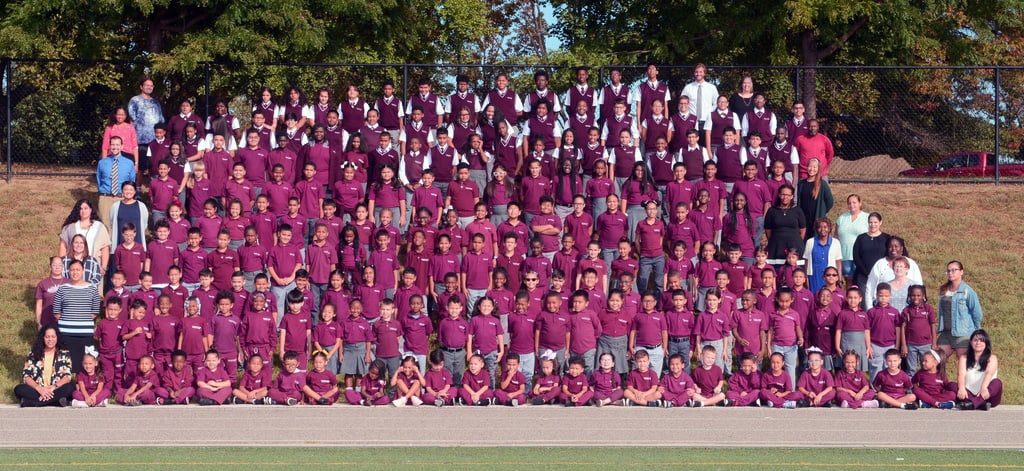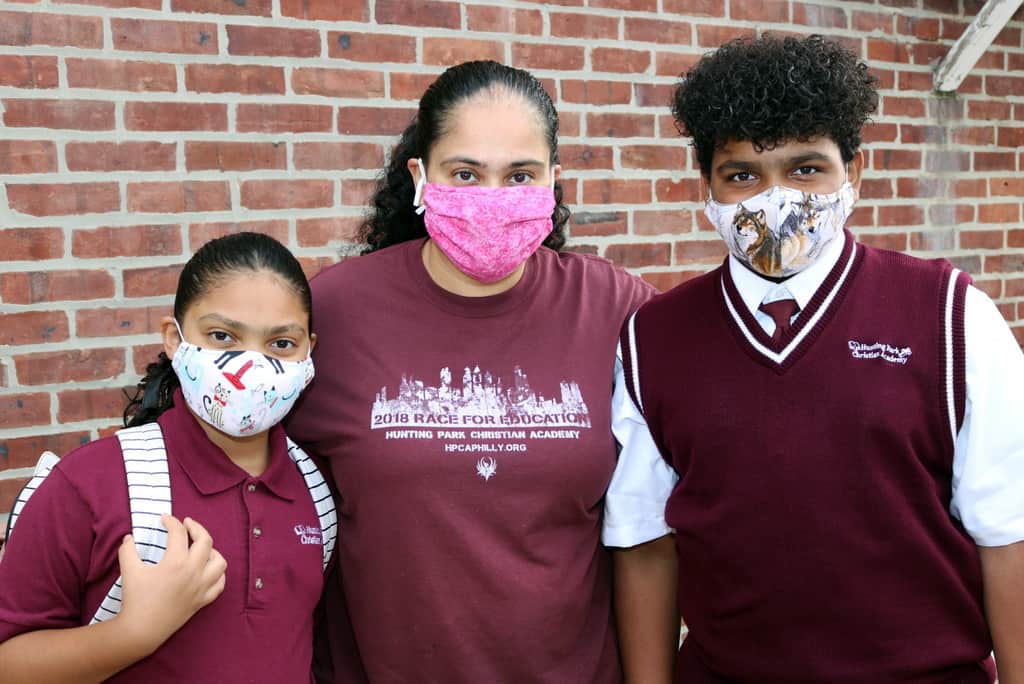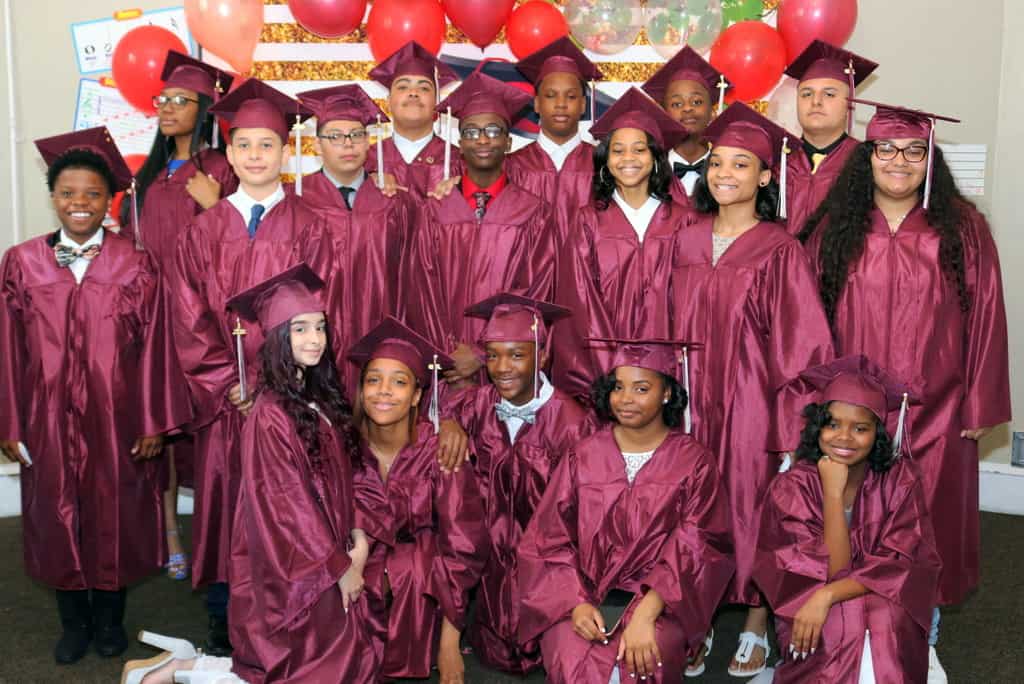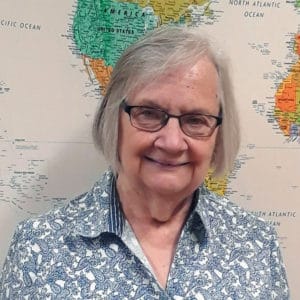Christian schools in the U.S. have been known as educational sanctuaries to protect and provide quality Christian education to children from Christian families. They also have been known too often as havens to protect white children from having to go to school with black and brown children who did not meet their standards. Praise God, change has been happening. In 2008 the U.S. went into an economic recession, and Christian schools often had to choose between closing (as parents could no longer afford tuition) or changing their mission. Even though the above stereotypes continue in many places, there is an increasing number of schools that embrace diversity and also recognize an evangelistic focus as part of their mission, especially in our cities. Hunting Park Christian Academy (HPCA) is one such school.1
Hunting Park Community
Hunting Park is a community in North Philadelphia that is named for a large park in its center. HPCA primarily focuses on what is called Hunting Park East, meaning it is the community bordering the east side of the park. This community was at one time populated primarily by working class German immigrants and some second and maybe third generation residents. More and more of the second and third generation from this immigrant base moved out of this community, and by the 1970s the community was beginning to see a change. The initial migratory change brought middle-class Hispanics to this neighborhood, but shortly thereafter it became a mixed community of Hispanics (mostly Puerto Ricans) migrating from further south in Philadelphia and African Americans migrating across the park to the east. Both these groups had lower incomes than the original Hispanic migrants who then moved even further north. This left a mixed, working-poor,2 low-income community. The 2015 census update statistics indicate that the community is 63.9% Hispanic, 31.3% African American, .9% mixed, 2.3% white, 1.3% Asian. The remaining .3% is due to rounding differences. Even though Philadelphia has a relatively high percentage of home ownership, this community has more rental units than the city as a whole due to the lower income levels.
Christian schools in the U.S. have too often been known as sanctuaries for children from Christian families and as havens to protect white children from having to go to school with black and brown children.
On top of the economic challenges and the multi-ethnic challenges, there are educational challenges in this community. The local public elementary school has had abysmal educational outcomes which culminated in the firing of its principal and many others due to a cheating scandal whereby teachers were required to help students with their standardized testing so the school would not look so bad and would be eligible for more funding.
All these challenges brought about an aura of hopelessness and resignation, feelings that things would never get any better. This, in turn, led to a high rate of drug and alcohol abuse as well as crime.
Spirit and Truth Fellowship Church
In 1987 Manny Ortiz’s family and this author’s family moved to Philadelphia from a ministry life of 21 years in Chicago working with youth, planting churches, and beginning educational programs including two elementary schools and a college preparatory program, in the middle of the Puerto Rican barrio. It also was instrumental in developing relationships between Hispanic ministries and African American ministries, even though communities in Chicago at that time were extremely racially and ethnically segregated and Hispanics and African Americans were not thought of as getting along with each other. These foci followed the two families as they made the move to Philadelphia.
By January 1988 Spirit and Truth Fellowship (STF) was planted in a home. Its congregation was composed of neighbors in their planters’ adopted community and friends of their high school children. Over the next few years, the church moved from one location to another, and in 1996 it bought its current home in the Hunting Park East community. This facility was a large multi-level facility with lots of room for classrooms. The existing church had been focusing on the older German inhabitants and had shrunk to a small number of congregants with a median age of 65. This group was a beautifully mission-minded church but just did not have the ability to meet the needs of a poorer, much younger and mixed population that was culturally distinct from them as well as from each other, so they sought to sell their building to a church that could meet this community, and STF was uniquely qualified to do so.
With about 25 primarily Hispanic and African American members (20 of whom were older teenagers or in their early 20’s), STF took the plunge and bought what seemed to them a huge facility with an equally large price. Once in their new facility, STF immediately made attempts to reach their new neighbors. Understanding that when a church moves into a new community, it should not determine what that community needs but should ask the community about its needs, STF went house to house surveying people as to what they felt about the community and what needs they would like a church to address. One of the needs identified by the residents was good education for their children.
Since the leadership had already begun a couple of schools in Chicago, it knew we had to discern God’s timing as well as God’s people to lead the school and teach the children. It held a number of meetings with a few people to discuss starting a school and to pray about it. Then, in the spring of 1999, it held one more meeting at which 18 interested people came including someone who wanted to be the principal3 and almost all the necessary teachers. The school was on its way! And it began in the fall of 1999 with grades Pre-K through 5th and then added one grade per year until it included 8th grade.
Hunting Park Christian Academy
HPCA has a unique mission statement that addresses many of the stereotypes mentioned earlier as well as community needs. Its mission is “to provide an affordable, quality, Christian education that celebrates a diverse community and leads children to know and serve the Lord.” We will dissect this mission statement, beginning with the stereotypes.
We mentioned two stereotypes in the introduction to this case study. The first was that many Christian schools were a sanctuary for children from Christian homes only. As can be seen from its mission statement, the school has an evangelistic focus. However, it does not stop there. It includes a discipleship component so children will not only get to know the Lord but they will be encouraged to serve the Lord. This cannot be done by simply having a Bible course for each grade or having chapel times. HPCA does have these but to disciple anyone, in this case a child, a person must show Christ in all of life. This means Christ is brought into all the subjects, not just Bible class, as well as classroom management. It also means that administrators, teachers, aides, and even lunch workers must show Christ, they must model what it means to be a Christian, to serve the Lord. This is the transforming love of Christ.
The second stereotype was that of schools protecting white children from having to attend classes with children of other races/ethnicities. As we can see from HPCA’s mission statement, the school not only accepts children from other cultures, it celebrates diversity. This means that students and staff alike must learn about and from people who are different from them. It is not enough to have a diverse student body. Again, the school must model diversity, not just in its student body but also in its staff. You can see from the following table that even though the ethnic percentages in the staff are not exactly the same percentages as that of the students, it does model the ethnicity of the students quite well.
The school not only accepts children from other cultures, it celebrates diversity. It is not enough to have a diverse student body; the school must model diversity, not just in its student body but in its staff.

HPCA Racial/Ethnic Breakdown
| Culture/ethnic group | % of student population | % of staff |
|---|---|---|
| Hispanic | 60 | 40 |
| African American | 26 | 15 |
| Multi-racial/ethnic | 11 | 5 |
| Asian | 2 | 15 |
| White | 1 | 25 |
Once the school got past the first few years and had grown to include all grades, it began to serve a total of 200 children each year with a waiting list of at least 150 children. Because of COVID, this year’s enrollment is down to 160, but hopefully it will catch up again post-COVID.
This area of expanding cultural diversity within a school has been a problem with some schools that have tried to make that change. Too often the vast majority (maybe even all) of the teachers remain white. The faculties of these schools have not been trained in their new mission, so they may not have developed a culture of care–care for the others’ culture(s). One example of this is that the majority U.S. culture tends to be very individualistic whereas Hispanic culture is very family oriented. Therefore, HPCA’s teachers work hard to develop a family or community feel in their classes and even at the all-school level. The school has learned that the strongest way to help academically is to build relationships with the students. Many Christian schools have not yet been able to make that adjustment.
Sometimes teachers fear disciplining children for fear the children, or their parents, will get upset with them. HPCA believes that discipline and care combined equals love. Training in every area is repeated often—from simple conduct such as raising hands before asking questions to more important rules on how to treat each other. The idea is to develop habits by practicing all the rules–often.
The next section of the mission statement we will address is the goal of providing quality education. A great deal of emphasis is placed on developing a curriculum for each grade that will best challenge the students to grow both in skills and in a desire to learn. Classes are held to a maximum of 20-22 students (depending on the grade) as opposed to the often 40 or 50 students per class in the local public school. Extra tutoring is available for students who need help. After the first couple of years of existence, HPCA has consistently been rated among the top elementary schools in Philadelphia per the standardized testing given in 5th and 8th grades.
Finally, we want to explore the idea of affordable education. The first year of the school’s existence, the administration had a training from an outside Christian group on how to run a school on a tuition base. The school was told that if tuition does not cover costs, it will fail. However, as mentioned before, the school’s community is a low-income community and parents from that community could not possibly afford a tuition high enough to support the school. In fact, 70% of the student body qualifies for free or reduced-cost lunches. All families pay some tuition, but total tuition covers only 35% of its total operating costs. The rest is raised through individual, church, and corporate donations, including a scholarship fund of over $500,000 a year to allow the school to meet its financial obligations without burdening the parents to the point where they cannot afford to send their children to the school.
Another way the school seeks to meet the financial needs of its parents is that it provides both before school and after school programs for working parents. The before school program is only for about an hour so parents can get to work on time, but the after-school program runs from 3 p.m. to 6 p.m. and includes assistance with homework, snacks, and recreational activities.4
Transforming Community
We entitled this case “Transforming Community Through Christian Education.” When STF began talking about starting HPCA, the late Manny Ortiz talked about it in terms of prevention–keeping our children from the draw of the streets, allowing them to recognize exactly who God made them to be and equipping them to fulfill God’s calling. In a community where the majority have not even finished high school and almost no one has gone through college, our students are being accepted at all the college preparatory city magnate high schools. They are doing well and often come back to visit HPCA and to tell the school they are the first person in their family to go to college.
Not only is the school showing their students the road to achievement (at least some of whom will be leaving the community upon college graduation), many students are staying in the community and continuing with HPCA. Two former students are now on staff. Four have their own children enrolled now while quite a few more have nieces and nephews enrolled.
This is transformation–spiritual transformation as they get to know the Lord, accept Him, and are discipled; educational transformation from one of the lowest-performing, most crowded public schools in the city to being educated in a school that ranks high, so that rather than going to a neighborhood public high school and most likely dropping out for a life working the streets they can learn in an academically advanced magnate school and even go to college; economic transformation that allows them to learn how to care for their own families including second-generation HPCA students; social transformation that keeps these children from turning to the streets and encourages them to be contributors to the welfare of their communities; and ethnicity transformation in that they have become learners of diverse cultures who can embrace that diversity.
A Christian school contributes to the holistic transformation of a community by playing a part in the spiritual, educational, economic, social, and ethnicity transformations of the neighborhood.
The Future
Until this year (because of COVID which will be discussed later), HPCA has been totally housed in STF’s church building with ten classrooms, a lunchroom and recess area for the youngest children,5 and the sanctuary for chapels and special programs (such as International Night or the Christmas program). The last year or two the school board has felt challenged to get an additional facility which would house students with special needs on one floor and a high school on other floors.
Special needs children can be a difficult issue to address in most communities, but these needs (whether physical, mental, emotional, or a combination) are exacerbated in areas that are marginalized, low income, and devoid of most opportunities available in other areas leading to unhealthy choices by parents. It hurts the heart of the administration when they must turn away a student because they need more one-on-one type of learning situations. Many are praying about this.
We mentioned how many of the school’s children have the opportunity to go to some of the best high schools in the city, yet it has been noticed that even with these there are problems. There are days when high school representatives are invited to talk with the graduating students to explain what their school offers and to solicit students to consider their school. However, they tend to talk down to the students. HPCA believes you cannot demand respect from students; you have to show children respect, recognize their abilities, and enhance those abilities. You have to get to know them and this, in turn, helps you to know their interests. Remembering our prevention motive for Christian education, it is especially important in high school to train the students to make a conscious choice to avoid the things of this world (at least while in the school). Therefore, the school believes there should be an agreement/contract with the students on what’s appropriate to bring to school (e.g., no drugs, no porn, no weapons, etc.).

COVID arrangements
We have mentioned that enrollment is down this year due to COVID. This case study would not be complete or current without bringing up how the school is operating in this difficult season. Therefore, here is just a quick synopsis of what they have been able to do.
The Philadelphia public school system is totally online, at least until January. There is no way for many of the public schools to get class size down with social distancing when they are beginning with so many students in a class. However, with its smaller class size, HPCA has been able to open with a hybrid form of face-to-face classes. One third of the enrollment meets all day in their classes on Mondays and Wednesdays. One third meets Tuesdays and Thursdays. And one third is entirely online per their parents’ request. Fridays are used for online chapels, teacher assistance for students with their online courses, community building Zoom sessions (including A group, B group and full-time virtual), and group instruction through Zoom. The school has provided face shields for all students, six-foot shields to separate students even with the 6-foot social distancing, special face shields for the teachers, and computers for every one of their students to be able to handle the online pieces. Some classrooms were too small for even half a class to be separated appropriately, so STF has allowed the school to utilize three rooms in their ministry center for this year to house the middle school classes (6th to 8th grade).
Upon entering either of the buildings, the children must stand in line 6 feet apart and have their temperatures taken. The pre-school children will not have naps this year. Pre-k through 2nd grade are dismissed at 2:30 and the rest of the school at 3:00 to stagger departure times. All rooms and shields in both buildings are cleaned every day with special equipment, and a protocol is in place in case one of the students gets COVID or has been exposed to someone else who has it.
All of these arrangements have been put in place to ensure a safe learning situation, and there is a great number of people praying that the Lord will allow the school to remain open, even in its hybrid form, without illnesses causing a shutdown.
Conclusion
We have reviewed the transformative value of Christian elementary education. We have done this through a case study of one inner city Christian school, HPCA, and have mentioned its future plans. We have tried to allow you, our readers, to see HPCA not as the way the Lord can use Christian education to bring about community transformation but certainly as a way. It takes time to see the transformation happening, and there is much more work to do, but the community is beginning to experience this transformation in real ways.
We would like to close this case study by saying that to take away the transforming light of HPCA in this community would be to take away a great deal of hope from otherwise hopeless people. God is being faithful to the school. We continue to pray that the school will remain faithful to its God-given mission in Hunting Park, Philadelphia.
Notes
1 Much of this case study was enhanced by an interview with Tanya Figueiredo, who was the first principal of the school, trained Kevin Deane to become the principal, took a couple years off, began her own family and got her masters degree, and then returned as the school’s current assistant principal.
2 The working poor is different from the dependent poor as the dependent poor are usually on some type of government assistance while the working poor have jobs but are still struggling to pay their bills.
3 Tanya Figueiredo (who is the author’s daughter) volunteered to be the principal of this new school. When asked what her qualifications were, she stated that she learned from her parents who were involved in leading Christian schools for 14 years in Chicago. People laughed, but those experiences were invaluable.
4 Due to COVID, these services are not offered during the current 2020-21 school year.
5 Esperanza Health Center, a Christian health center with which STF has partnered, has a gym and allows the school to utilize the gym for phys. ed. classes for all other students.



2 thoughts on “Transforming Community Through Christian Education: A Case Study On Hunting Park Christian Academy”
Wonderful article, Sue. Great testimony to the ministry which you and Manny initiated in such a visionary and faith-filled way. It is a shining light and exemplary for all involved in urban ministry.
Wonderful article. That was my church(Fellowship) and my neighborhood. I have been a missionary in Latin American countries for 40 years. Yea to this ministry!